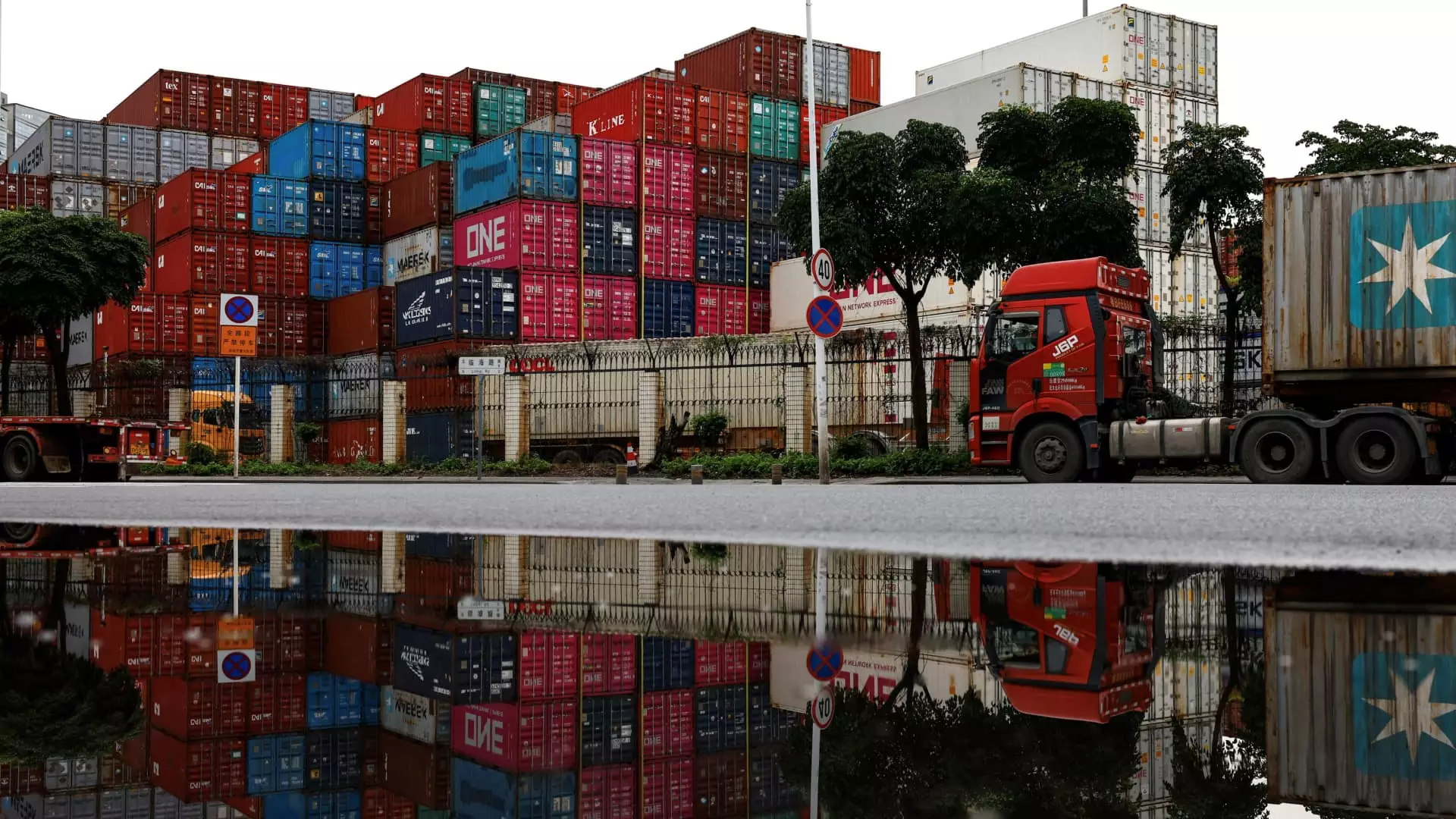China’s recent economic indicators reveal a troubling narrative: a slowing, fragile economy teetering on the brink of deeper contraction. Official data, such as the manufacturing PMI, paint a picture of a country struggling to maintain momentum amid mounting external pressures and internal challenges. While government statements often emphasize resilience or the potential for stabilizing growth, the underlying reality is far more complex and precarious. It’s clear that the country’s economic vitality is compromised by a nexus of poor weather, trade tensions, and structural overcapacity.
Predictably, the manufacturing sector—which historically served as a backbone of China’s rapid growth—continues to contract. The PMI reading of 49.3 for July, just below the neutral 50 mark, is a clear signal of ongoing recessionary trends. Yet it’s not only the numbers that should alarm policymakers and observers but also what they conceal: vulnerabilities rooted in trade frictions and a reluctance of domestic firms to ramp up production under uncertain conditions. The contraction is compounded by seasonal factors, extreme weather events, and the government’s attempts to recalibrate overcapacity, which altogether hinder the manufacturing engine from restarting.
Moreover, employment metrics echo this deteriorating trajectory, with new job creation stagnating and overall employment figures remaining well below levels that would suggest a healthy economy. Even the sub-indexes focused on new orders and raw material inventories reflect contraction, revealing a cautious and shrinking appetite for investment and expansion among Chinese firms. These signals are not just transient—they point to deeper issues of demand deficiency and confidence erosion, issues that could persist long after the weather improves or trade tensions ease.
Trade Tensions and Structural Flaws: The Shadow Economy
While headline figures might suggest resilience—such as the modest 5.8% export growth in June—these masks shifting trade dynamics and the increasing decentralization of production. As tariffs and geopolitical frictions persist, China’s manufacturing base is diverting certain order flows to countries like Vietnam, Malaysia, or Bangladesh, seeking to evade punitive tariffs and maintain export revenues. This diversification is a double-edged sword: it sustains short-term growth but signifies fundamental weaknesses in China’s manufacturing competitiveness and a loss of market share to other emerging economies.
The ongoing trade disputes, and the indefinite stalemate after the recent talks in Stockholm, cast a long shadow over future growth prospects. Without clear resolution, businesses will remain hesitant to commit to new investments, further dampening demand. The Chinese government’s reluctance to introduce substantial stimulus measures—highlighted by a lack of interest rate cuts and limited property market support—adds to the sense of cautious stagnation. When the policymakers prioritize debt control and social stability over aggressive economic stimulus, it suggests they are increasingly wary of overheating or financial risks, but it also leaves the economy exposed to downside risks that could accelerate without intervention.
This cautious stance reflects a broader concern: China is transitioning into a phase where growth can no longer be solely fueled by infrastructure spending or export expansion. Structural reforms are needed, but they are politically complicated and slow to implement. Meanwhile, overcapacity continues to drain resources and profitability, constraining product innovation and productivity gains. These issues, unaddressed, threaten to undermine the very foundations of China’s economic miracle.
Weather, Policy, and the Yin-Yang of Growth
Adding to the economic headwinds are extreme weather phenomena like torrential rains and heatwaves—climatic events that are becoming more frequent and severe. The recent tragic loss of lives on the outskirts of Beijing due to heavy rain underscores the immediate human and economic toll of these environmental shocks. Such events disrupt production, delay construction projects, and strain public infrastructure, further dampening an already fragile manufacturing recovery.
Simultaneously, China’s internal policy environment is caught in a paradox. On one hand, the leadership fuels hopes for long-term stability by ramping up social policies aimed at boosting birth rates and managing demographic shifts. On the other hand, there’s a notable absence of proactive economic stimulus measures. The Politburo’s emphasis on managing local government debt and avoiding overheating indicates a cautious approach, but this caution may come at the expense of more immediate economic vitality.
In many ways, China’s current predicament resembles a staged balancing act: managing environmental risks, avoiding financial instability, and navigating trade tensions—all while trying to sustain growth. However, without bold steps to mitigate structural weaknesses, the economy risks becoming increasingly dependent on external factors that are beyond its control. The stage is set for an extended period of sluggish growth, with occasional shocks that further undermine confidence and investment.
This predicament is disconcerting because it exposes China’s overreliance on traditional growth engines—exports, heavy industry, and infrastructure—while neglecting the need for innovation, domestic consumption, and sustainable development. The longer these issues remain unaddressed, the more difficult it will be for China to regain the robust growth it once enjoyed, and the more vulnerable its economy becomes to global macroeconomic shifts.

